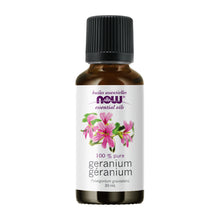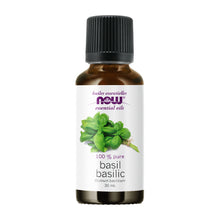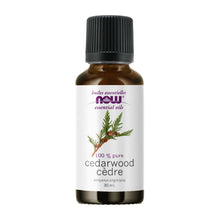
Info: Essential Oils and Carrier to Make Your Own Concentrate or Spray
If it's at least 4°C and you're walking in brushy, wooded, or tall grassy areas, you might encounter ticks just waiting for the opportunity of hopping on to feast on your or your pet's blood, which could end up making you quite sick. It's best to prepared with a natural tick repellent which may help reduce the risk.
Info: Essential Oils and Carrier to Make Your Own Concentrate or Spray
If it's at least 4°C and you're walking in brushy, wooded, or tall grassy areas, you might encounter ticks just waiting for the opportunity of hopping on to feast on your or your pet's blood, which could end up making you quite sick. It's best to prepared with a natural tick repellent which may help reduce the risk.
Product Notes:
If you walk your dog in wooded areas, you both may be at risk of acquiring unwanted 'passengers' laying in wait for you to brush by so they can latch onto you: wood ticks. In addition to all the pain and itching and how troublesome they can be to remove, they can also carry serious tick-borne illnesses like Lyme disease or Rocky Mountain spotted fever.
While many use odor-masking DEET to repel them, that chemical is not safe for pets, and many people seek to avoid conventional formulas with harsh chemicals for their adverse effects and smell, which can be rather off-putting (one usually feels compelled to shower or at least change clothing after). DEET is also a "plasticizer" than can dissolve things on your person such as certain synthetic fabrics, watch crystals, or the frames of your glasses.
DIY Natural Tick Repellent Formulas
Fortunately, there is a safe, natural, non-toxic alternative, in the form of a number of plant-based essential oils (EOs) which have been shown to be able to repel ticks or other arthropods, which can either be used alone or in combination in concentrated form on fabric (such as on your socks, or a dog's collar or harness), or blended with something else to make it a sprayable solution.
These include the three EOs offered here: Basil, Cedarwood, and especially Geranium (sometimes called Rose Geranium), which can be mixed first with glycerin and then with water, to make a spray. Depending on the concentration, studies have indicated they can repel ticks very well at first, but may require reapplying more, for longer times. (E.g., a new study of cedarwood found it repelled 94% of the tick nymphs exposed to a test strip with it on for the first half hour after application, which dropped off to 80% after an hour).
Other essential oils you may also want to consider adding to the mix for a repellent include: Citronella, Lavender, Lemon Eucalyptus, Rosemary, Spearmint, and Thyme (either the 'creeping' type or the common [vulgaris] / red type ). Most of these (all but the Spearmint) are available from the same NOW brand, as 100% Pure Essential Oils. There is also a premixed version aimed more at other sorts of insects, called Outdoor Living [Defensive Blend].
Of course, glycerin is not the only way to dilute the EOs to convert it to a spray. Many 'Do It Yourselfers' and small craft producers recommend using some combination of these oils in base of either alcohol (usually vodka) or witch hazel or apple cider vinegar.
Alternatively, some have used Rose Geranium by itself blended with jojoba oil and olive oil as carriers; another has used cedarwood and oregano in a carrier blend of hemp seed oil and distilled water.
Suggested Usage:
It's not advisable to put concentrated essential oils directly on the skin or fur, but to deter ticks, you can put a few drops of these oils directly onto cloth items like your socks or pant cuffs to soak in, or a fabric dog collar.
To make a spray, first place about 20 drops in total for whatever combination of these three essential oils you choose into a small glass or metal cup, and pour about 30 ml of glycerine into it and mix them well. Then get a clean spray top bottle (ideally, a 250 ml size) and add 220 ml of water to that.
To apply, shake the bottle well before each application to reblend the oils with the water, then spray around the ankles, legs, neck and arms (for people), or just between the shoulder blades and tail tip of the dog (being sure to avoid the eyes), if you're doing this pretty much every day, or possibly also on their paws, legs, and under their bellies, if it's only occasionally. For best results, re-apply every hour or two while moving in a tick-infested area.
To make a shampoo for either (wo)man or beast, just add about 10 drops in total of these oils (whether 10 of a single one, or 3 or 4 of all 3) to 30 ml of a unscented natural soap base such as Dr. Bronner's, and mix well.
Related product: Junglista Natural Insect Deterrent.
Warnings:
For external use only. Do not ingest. Avoid eyes, face, and sensitive areas.
Supporting Science:
Flor-Weiler, Lina B et al. “Repellency and toxicity of a CO2-derived cedarwood oil on hard tick species (Ixodidae).” Experimental & Applied Acarology, 2022.
Jaenson T.G.T., et al. “Repellency of Oils of Lemon Eucalyptus, Geranium, and Lavender and the Mosquito Repellent MyggA Natural to Ixodes ricinus (Acari: Ixodidae) in the Laboratory and Field.” Journal of Medical Entomology, 2006.
Kulma M., et al. “Lavender, Eucalyptus, and Orange Essential Oils as Repellents against Ixodes Ricinus Females.” Scientia Agriculturae Bohemica, 2017.
Panella, N A et al. “Susceptibility of immature Ixodes scapularis (Acari:Ixodidae) to plant-derived acaricides.” Journal of Medical Entomology, 1997.
Štefanidesová, Katarína et al. “The repellent efficacy of eleven essential oils against adult Dermacentor reticulatus ticks.” Ticks and Tick-borne Diseases, 2017.
Tabanca, Nurhayat et al. “Bioactivity-guided investigation of geranium essential oils as natural tick repellents.” Journal of Agricultural and Food Chemistry, 2013.
Wang, Haozhe V et al. “Repellent and acaricidal activities of basil (Ocimum basilicum) essential oils and rock dust against Ixodes scapularis and Dermacentor variabilis ticks.” Experimental & Applied Acarology, 2022.
Product Options:









